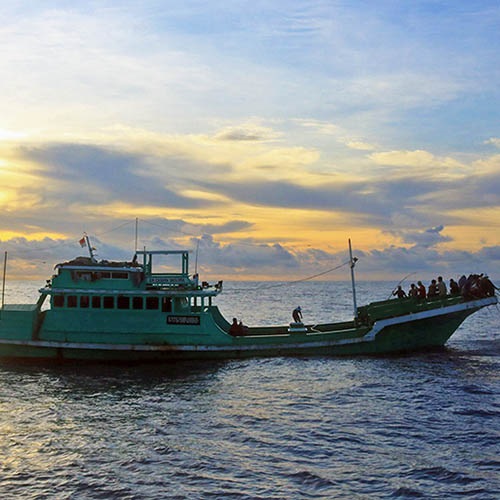Depleting the population of species low in the food chain, such as sardines and anchovies, can have significant knock-on effects for other species within the ecosystem.
The MSC Fisheries Standard aims to limit the impact on ecosystems caused by the commercial harvesting of such species, known as low trophic level (LTL) species.
Fisheries that target key LTL stocks must ensure they are being managed in a precautionary manner that reflects their ecosystem importance.
Fisheries targeting other species at Maximum Sustainable Yield (MSY) level typically ensure that 40% of the unfished population remains in the ocean. However, key LTL species should be managed at a level consistent with the ecosystem needs, which could mean leaving up to 75% of the unfished population in the ocean.How has our Standard changed?
The new version of our Standard includes clarified requirements and new guidance to ensure that key LTL species are assessed more consistently. These changes will also ensure that fisheries targeting key LTL stocks are using a precautionary approach to management and not threatening the wider ecosystem.
New guidance
We have developed clearer guidance on the requirement for fisheries targeting key LTL species.
Fisheries must be harvesting at a level consistent with the needs of the ecosystem. The guidance clarifies what this level should be. This includes stating by default, that the level should not be lower than 75% of the unfished population, with a clear argument required for an alternative level.
Clarification of reference points
The new Standard states that the assessors can use either the spawning stock indicator or the total biomass indicator to assess a key LTL stock. However, if the total biomass indicator is used then there must be justification which shows a fishery's management measures protect the key LTL stock and the environment.
Designation of stocks as key LTL
Instead of assessors having to re-determine whether a stock is key LTL upon each surveillance audit (as was the case in the MSC Fisheries Standard version 2.01), any stock designated as key LTL would remain as such throughout the certification period. Re-designation can take place during surveillance audits, however, should new information become available.
Fisheries Standard 3.0 implementation
Developing our Standard
In 2022, we published Version 3.0 of the MSC Fisheries Standard following the most comprehensive review to date.
The development of the Standard followed public consultation on key aspects of the review, including a 60-day public review of the draft Standard and all associated documents.
We also commissioned independent research and carried out data analysis and impact assessments to determine whether proposals are feasible and deliver our stated intentions. We also sought advice and input from our governance bodies throughout the process.
Follow the links below to find out more about the different inputs which contributed to the development of our updated requirements and guidance on key LTL species:

MSC Fisheries Standard version 3.0
An overview of the changes made to our Standard.

Fisheries Program Documents
The MSC Fisheries Standard and General Certification Requirements.

.tmb-labelhome.jpg?Status=Master&Culture=en&sfvrsn=39466bd9_3)